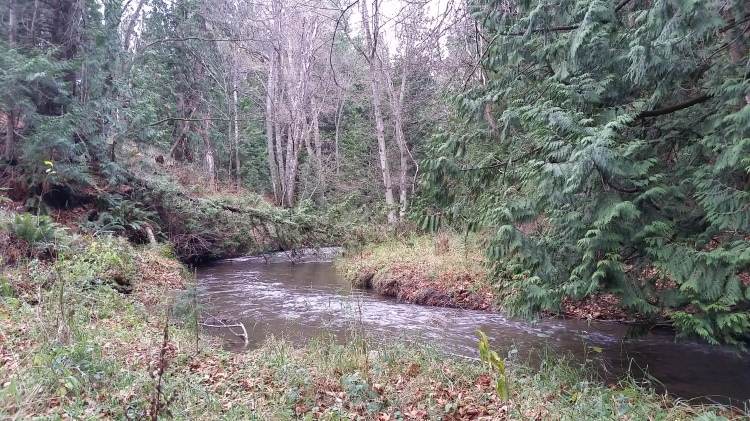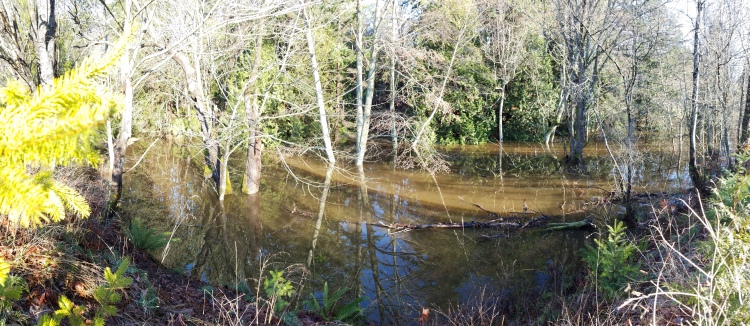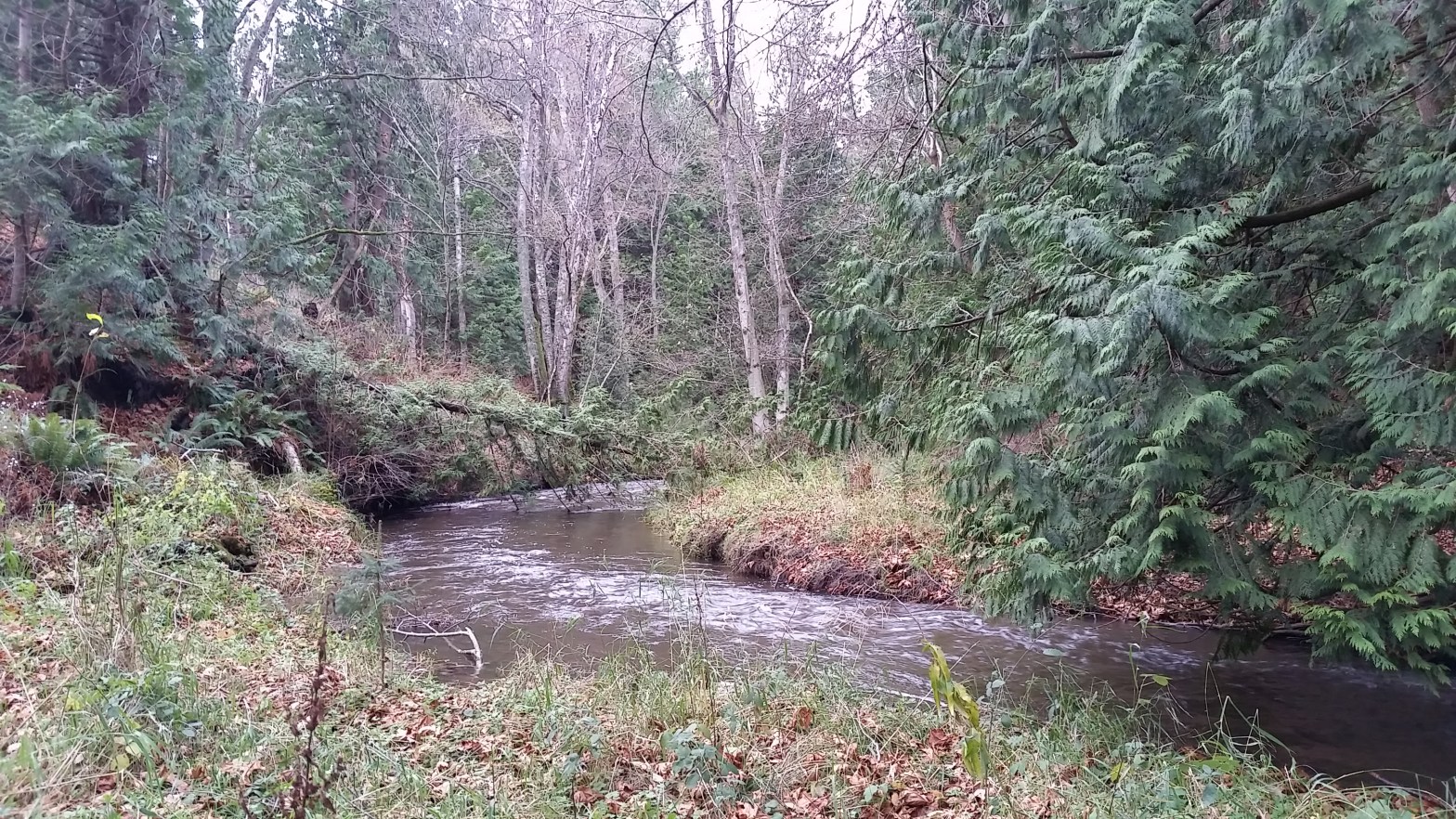The Thursday morning before Christmas, I got up to get ready for work and discovered that we had no running water. NOOOOOO!!!! I knew it was below freezing outside, and my first thought was that our pipes had frozen. But it wasn’t that cold. Why would they freeze now? I hadn’t had coffee yet, so my brain was muddled, and you need water to make coffee. The situation was dire.
I didn’t want to wake up Josh until I had an idea what was going on, because there’s nothing Josh hates more than plumbing problems. Really, nothing. If I woke him to tell him there was something wrong with our pipes his whole week would be ruined and he’d be a monster to live with. He was still steaming about a toilet problem that we had fixed months ago.
Fortunately we had a gallon of water in our Berkey purifier, so I could make the coffee and pull it together. Duly caffeinated, it then occurred to me to go outside and try the outdoor frost-free pumps, which are on a separate waterline from our house. If the pump had water, then I would know that the problem was isolated to the house (SO much of homesteading is a process of elimination). Flashlight in hand, I skated across our driveway to the closest pump by the pig paddock. Not a drop came out. We were completely without water.
Although this may sound like bad news, it was a huge relief, because it meant that whatever was going on was not our problem–at least not directly. We wouldn’t be calling a plumber on Christmas weekend. Hooray! Josh’s week was saved.
We get our water via a water association. There are some large wells just up the road that serve about 60 water shares via an enormous 12-inch water main. The association buys water from the city of Ferndale when the wells go dry in the summer. We are fortunate to own 2 water shares that came with our property. The downside is that it’s expensive–we pay more for water in the county than we did in town–but it’s also a very fortunate situation in our county where water access is a major problem.
There’s currently a moratorium on new wells on undeveloped property in Whatcom county until a study can be done to determine how many wells our water table can support. In theory, the caution is a good idea; land management is trying to make sure the county isn’t developed more densely than the land can support. At the same time, this edict came down unilaterally and with little warning, so hundreds of properties that were purchased with the intention to build are now fairly useless to the owners, with values depreciating by 50% overnight. Many people bought land with loans that require them to put up a house within 2 years and are now sunk.
Which brings me back to our own mini-water crisis. The day before our taps ran dry it rained all day, a heavy steady rain, unceasing for 24 hours. That rain fell on already saturated soil, with a water table at or near the surface, so there was nowhere for the water to go but downhill. There’s a gentle little creek that runs through the back of our property that rises to 16 inches at its most raging. 100 yards downstream of our property, it runs through an enormous culvert ~6 ft. in diameter underneath a road and out the other side, where it continues on its gentle way to Bellingham Bay.
But something happened to partially block and crush the culvert–maybe a downed tree in a windstorm, which restricted the flow of water through it. That 24 hours of rain caused all of the properties bordering that gentle little creek to funnel water into it at a much faster rate than the damaged culvert could let it through. The road then acted as a dam, and water level rose, and rose, and rose, eventually cresting the road itself and running ferociously down the other side, where it washed away the gravel shoulder down, down down, at least 15 feet to where the water main for our water association was buried. The gravel bed supporting the pipes eroded away, and the pipe came apart.
Voilà. 60 homes without water.



Josh pointed out the irony that an excess of water caused us to be without water. We live in one of the most reliably wet places in the United States, and yet there’s a lot of anxiety about water availability in our county. How did a county that gets 60 inches of rain a year get into this situation?
Our brief period without running taps has given me a lot to think about. If utilities become unreliable, do we have backup systems in place?
We don’t live off the grid, and we don’t aspire to live off the grid. But if the grid disappeared…well, that’s what preppers are prepping for, right? Once again, I’m noticing the thin line between the prepping mindset and the homesteading mindset. We’re now taking a mental inventory about our backup systems for water, heat, refrigeration, and fuel. Where can we implement reasonable redundancies? What is a rational level of caution?

Oi! Looks like you got some LDS in your future. Reminds me that I need to get a basic emergency kit for our house.
LikeLike
The only definition I can find for LDS is Latter Day Saints…?
LikeLike
Is there any way you can run some pipe from the creek into cisterns on your property? I don’t know what water rights are in Washington, but here in Oregon we own our creek and that’s what we do. We have two 1500 gallon cisterns that constantly refill and feed our house and garden. Good luck!
LikeLiked by 1 person
Wow, that’s great. No, it’s illegal here, and we don’t have any rights to the water in our creek. That’s cool that you do!
LikeLiked by 1 person
That’s a great idea 🙂
LikeLiked by 1 person
What about rainwater collection in large cisterns with filters set up for potable drinking water? (i.e., https://www.rainbrothers.com/single-post/2016/1/20/How-to-Filter-Rainwater-for-Drinking) I’ve seen them before (and drank out of them) and it might be worth considering…we are planning to build this spring and have two 5,000 gal cisterns on the shopping list to add so that we can go beyond graywater recycling and barrels and actually use the Northwest rain for regular stuff as well – yes, an endeavor, but like you said, backup systems can be worth their weight in gold, even if you’re not a ‘prepper’…
LikeLike
Thanks for the link. I’ve thought about large cisterns, then always cringe at the expense and effort involved.
LikeLike
This is a great suggestion. Harvesting rainwater apparently requires a permitted system of collection, purification, and storage, which is surely a big up-front cost (wells aren’t free though). Not sure why more people are considering this, especially when feeling trapped by a mortgage on undeveloped land.
LikeLike
Actually in Washington and Oregon that is not accurate. No permits are needed to harvest rain water in either state (and many others as well). We got our first rain barrel free because a lot of companies have food safe barrels they’re happy to get rid of (ours used to have soy sauce in it!), And you can also buy them online at Amazon and in stores like Home Depot… We got our 300 gallon cistern through Amazon which included free shipping for about $350, which waters our entire garden with rainwater all summer, along with providing water for our ducks to drink and swim in here in the northwest. If you want to use rainwater for drinking then yes you need purifiers but you can get a small inexpensive one (like ones used for camping) to at least cover emergencies.
LikeLiked by 1 person
Could you post a link to your cistern from Amazon?
LikeLike
Of course! Here’s the picture of our biggest one (we have 2 smaller ones as well) all painted up: https://theecofeminist.com/2016/04/26/tuesday-get-an-ecopeek-3/cistern/. The brand is Good Ideas (Rain Wizard 300) and I ordered it from Amazon in 2012 so I don’t see the exact model but there are a ton of others available for sale on Amazon. I always recommend watching Amazon for a couple weeks before making a purchase, as the prices always fluctuate wildly for these kinds of things!! With our Northwest weather I end up attaching a hose and leaving the spigot open during the winter so it overflows away from the house (then close it up in early spring to let it refill), and keep the smaller barrel spigots closed to use those for duck watering…but I know if we had more animals we would totally be using the big one in the winter as well!
LikeLike
Thank you!
LikeLike
I just started reading your blog, glad I found it, thank you! Ooo, no water is no fun! I grew up off the grid and remember those days with my dad trying to source the problem. I also deal with it every year now at our food truck. Its amazing how life stops where there is no water! As soon as the thermometer starts hovering around 32 it is time for us to pay attention. It’s there worst if I forget to bring in the hose and have to sit out in 28 degree temperatures dumping water on the hose, the pipe, and myself, only to realize it’s frozen inside the cart too and I then just have to wait until it warms enough in there to let the internal pipes thaw. Glad it wasn’t your issue to fix! I hear you with he prepping I always have it in the back of my mind. We are so far from prepared is a crisis happens, but I do try to add little things here and there that will help. Hope the water issue was mended quickly… Cheers ~ Marica
LikeLiked by 1 person
Gwen,
We don’t live too far from you guys – if you need anything (shower, do laundry etc) please let me know and you’re more than welcome to come on over and take care of a few things!
Peg
LikeLike
Thanks Peg! We’re back on now, it only lasted a couple of days.
LikeLike
I’d say having a berkey purifier is your first step in the right direction. The other thing we do in the winter is keep a couple of 5 gallon buckets full of water in the bathtub to use for flushing or we can warm it up for washing if need be. This is not a long term solution but it has helped out a couple times when our water was out short term.
LikeLiked by 2 people
Yes, that’s a good practice. We had a few full buckets in the barn, but they were frozen
LikeLiked by 1 person
We really love using our Berkey! It has helped us countless times!
LikeLike
Also, the buckets are a great idea. Water has been on my mind a lot lately. I feel like our food is pretty set with our animals and ourselves short term, but water would really be a struggle!
LikeLike